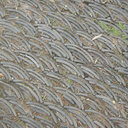The essential oil from the twigs of Cinnamomum cassia Presl alleviates pain and inflammation in mice.
الكلمات الدالة
نبذة مختصرة
BACKGROUND
Cinnamomum cassia Presl (Lauraceae) can be found southern China and its bark is commonly used for centuries as ingredient in food and cosmetic industry. The twigs of Cinnamomum cassia Presl is popularly used in China to treat inflammatory processes, pain, menstrual disorders, hypertension, fever etc. The aim of this study is to evaluate the antinociceptive and anti-inflammatory properties of the essential oil (EO) from the twigs of Cinnamomum cassia Presl.
METHODS
The chemical characterization of the EO was performed by gas chromatography coupled with mass spectrometry (GC-MS). The EO doses of 15, 30, and 60mg/kg were employed in the biological assays. The antinociceptive effects of the EO were evaluated using the models of acetic acid-induced writhing, oxytocin-induced writhing, and formalin and complete Freund's adjuvant (CFA) -induced overt pain tests. we also investigated the effect of the EO in pain intensity to a mechanical stimulus (mechanical hyperalgesia) after carrageenan by using an electronic version of von Frey filaments. Evaluation of anti-inflammatory activity was based on paw edema induced by carrageenan (300µg/25µL/paw) in mice. The levels of cytokines, NO, and PGE2 in paw skin tissue were determined according to instructions. COX-2 and iNOS proteins in paw skin tissue were assessed by Western Blot.
RESULTS
The EO (15, 30, and 60mg/kg) reduced the number of abdominal writhings induced by acetic acid with inhibition of 38.0%, 55.4% and 58.7%, respectively. The EO (15, 30, and 60mg/kg) also reduced the number of abdominal writhings induced by oxytocin with inhibition of 27.3%, 51.7% and 69.0%, respectively. The EO significant inhibited the inflammatory (second phase: 10-30min) phase of the formalin-induced paw flinching and licking at the doses of 15, 30, and 60mg/kg. The EO at the tested doses of 15, 30, and 60mg/kg showed inhibited CFA-induced paw flinching and licking. The EO (15, 30, and 60mg/kg) also inhibited carrageenan-induced mechanical hyperalgesia and paw edema. It also decreased the levels of cytokines (TNF-α, and IL-1β), NO, and PGE2 in carrageenan-induced mice paw skin tissue. Moreover, Western blot analysis showed that COX-2 and iNOS expressions in paw skin tissue of mice were significantly reduced.
CONCLUSIONS
These results demonstrate that the antinociceptive and anti-inflammatory properties of the EO from the twigs of Cinnamomum cassia Presl, corroborating its use in folk medicine.





